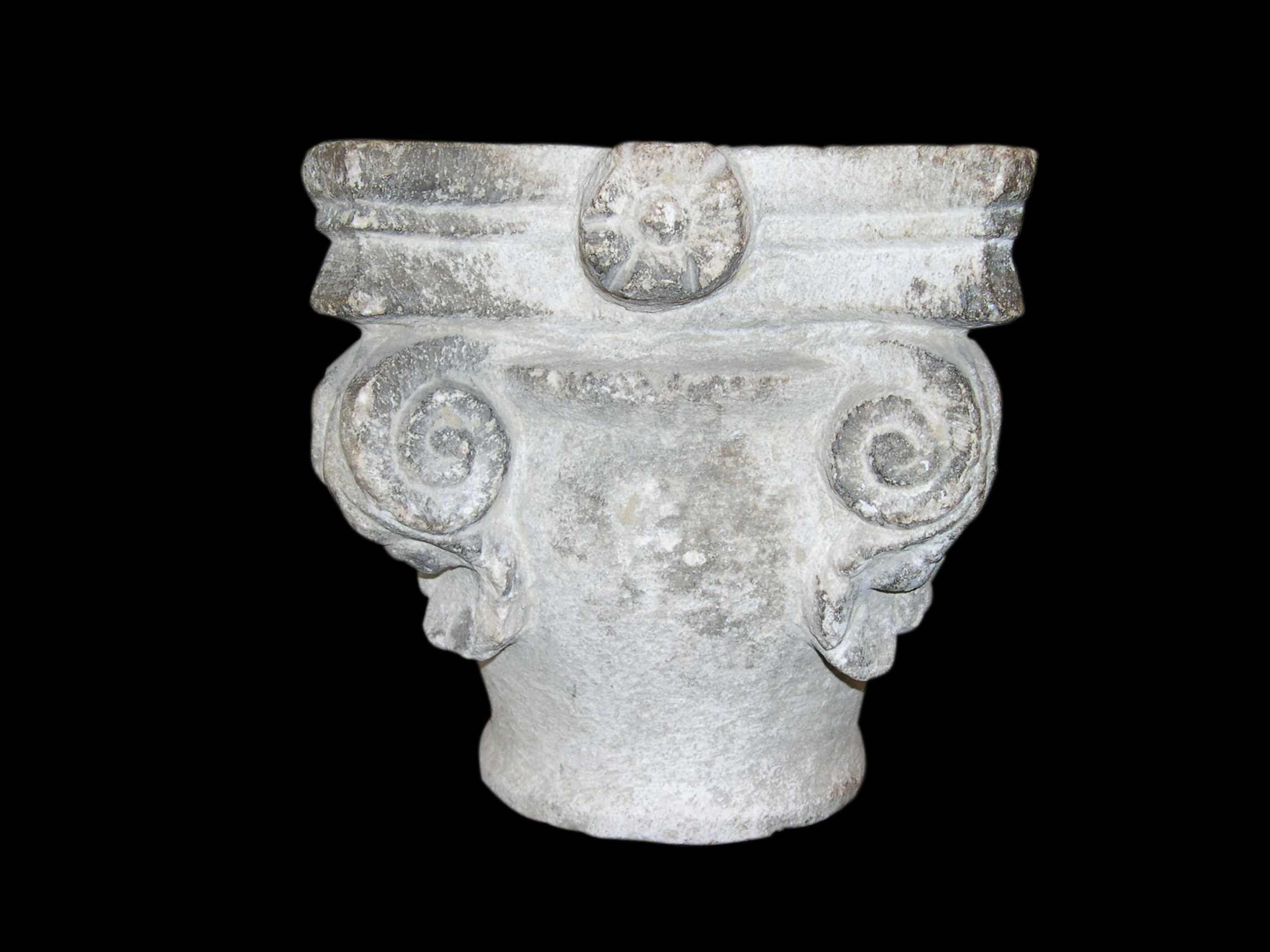Small column capital
Small column capital made of a plain body, slightly bulging over the central part and ending with a thick margin carved in sensible relief; at the latter’s sides unroll two volutes with a flat strip curling into a tight coil. The outer surface of the volutes is completely covered by a long and thick leaf, with roughly carved margins, that descends until it reaches the capital’s shaft; it probably represents a transmutation of the volutes’ protection leaf that it is here transformed from a secondary accessory into a decorative feature of its own. The high abacus is carved with a semicircular moulding, a fillet and a plain fascia with angular profile, and it is decorated by a large rounded flower with central button and petals coarsely separated by mere incisions. The capital, which is marked by a simplification of ornaments taken to extremes and by a rather coarse handling, fits well into that stream of dull reduplications of Roman Corinthian and Composite capitals produced between the VIII and IX century AD and invariably characterized by a small-scale format. They were, in fact, capitals intended to be used as ornaments of church furniture or of small and medium sized architectural structures, such as cyboria, canopies, niches, etc. For comparisons we may recall the many exemplars carved in Northern and Central Italy, and in particular some coming from Brescia, Cividale del Friuli, Pisa and Amelia in Umbria. Taking into consideration such parallels, as well as the treatment of the spirals, with their tracing still not completely flattened, and the composition of the abacus that shows a certain desire to conform to traditional models, we may date our capital between the VII and the VIII century AD.







